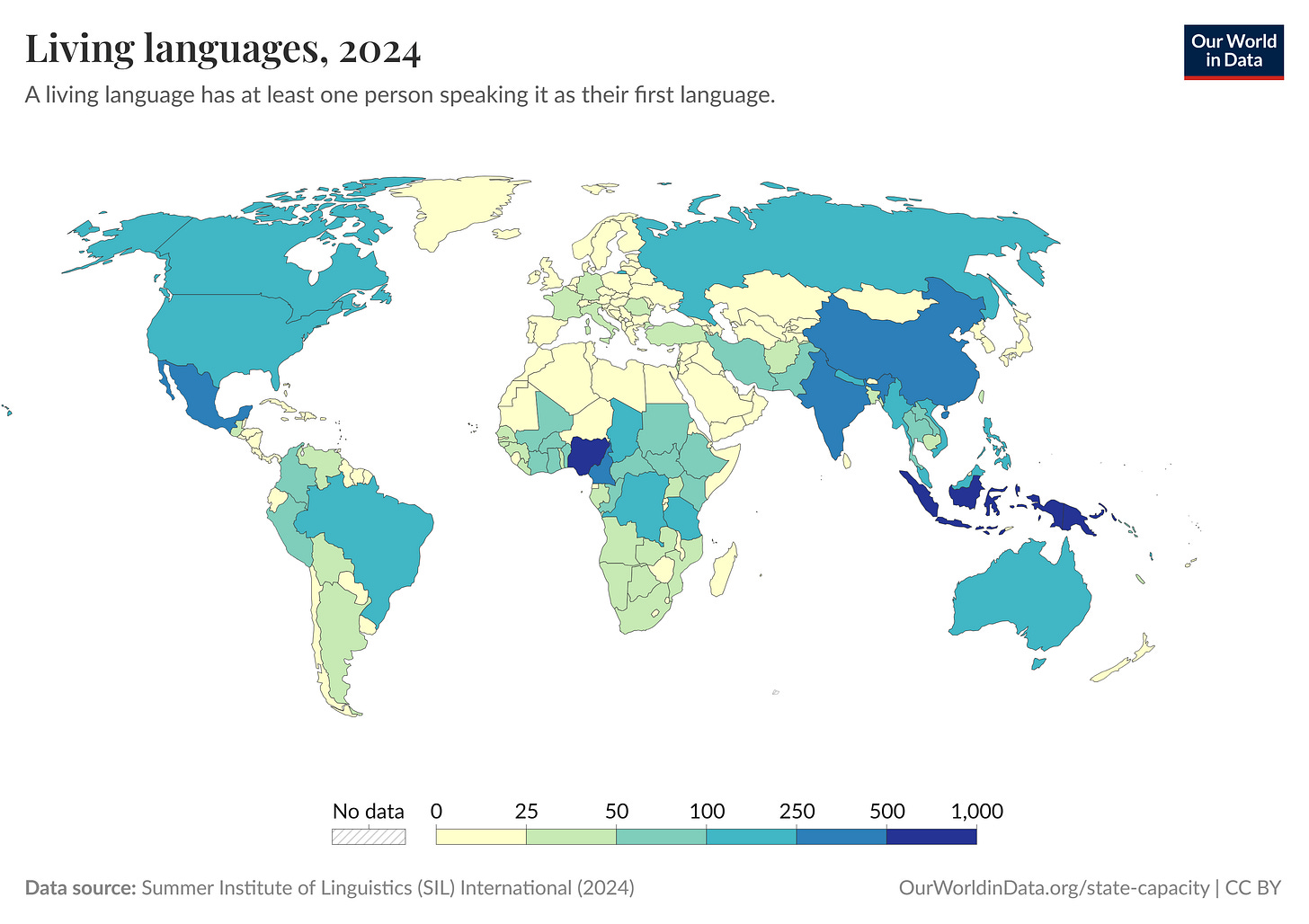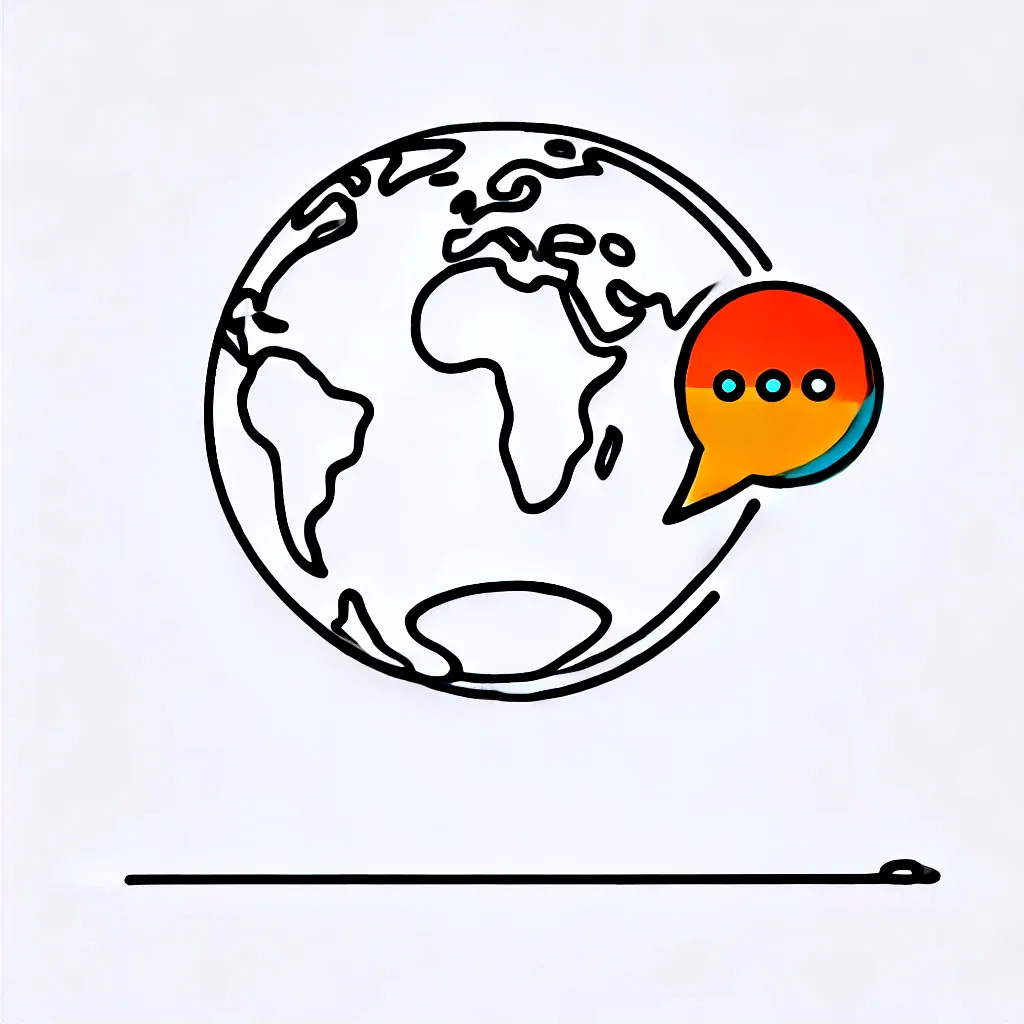Languages Without Limits
Voices from the past, conversations for the future.
Papua New Guinea is home to 840 living languages - more than any other country. It holds more than 10% of the world’s languages, a result of its unique geography and history1. Unlike many nations that developed a dominant language through early centralised governance, Papua New Guinea’s rugged terrain fostered linguistic diversity, with communities developing independently over thousands of years. Historically, being cut off from the world led to language preservation.
The G-Force
Fast forward to today.
About nine in ten people in the world are located in the range of a 4G network2.
What are the key shifts underway?
Extinction of Languages
Across the globe, the number of living languages is declining. Migration, cultural assimilation, and economic shifts have led to language erosion. While European heritage languages such as Italian and German have seen declines in second and third generations of migrants, Asian and Middle Eastern languages like Mandarin, Hindi, and Arabic have gained prominence due to strong cultural ties and demographic growth. Government policies and education systems have also played a role - some nations encourage multilingualism, while others prioritise dominant global languages which a to accelerate the language shift.
Preservation of Languages
As major world languages grow in influence, smaller languages face extinction.
Despite this shift, technology, as a global infrastructure, is proving to be a powerful tool in reversing this trend.
AI, digital archiving, and machine learning are enabling the documentation and revitalisation of endangered languages. Interactive apps, virtual reality experiences, and AI-driven language tools are making it easier to learn and engage with these languages. Machine translation is expanding access, and digital platforms allow communities to preserve and share linguistic traditions.
The rise of connectivity means that even the most remote languages can be archived and revitalised. Where physical geography once kept languages isolated, technology is now breaking down barriers. Communities can document, teach, and expand their linguistic heritage beyond borders.
Speaking Across Borders
Language learning apps like Duolingo, Babbel, and Rosetta Stone offer structured lessons and interactive features. Yet, they do not cover all living - or extinct - languages.
Translation apps have made it easier than ever to communicate across borders. Tools like Google Translate, Microsoft Translator, and DeepL enable real-time text, voice, and image translation in dozens of languages. AI-powered platforms like Maestra AI and Trados further enhance accessibility by supporting live conversations and professional-grade transcription.
These platforms primarily focus on widely spoken languages, leaving many indigenous and endangered languages without digital support. The technology exists. What’s needed is entrepreneurial leadership to ensure that every language, no matter how small, has a future in the (digital) world.
Crossing Borders for Smarter Business Success
A vast range of technology exists for entrepreneurs and business leaders to leverage. Its impact goes beyond languages. It can be leveraged to preserve and expand access to knowledge, culture, and broad-based opportunity. From digitising historical archives to enabling real-time translation, from creating AI-driven tutors to safeguarding indigenous wisdom, technology provides the infrastructure.
Without leaders who see the potential and act on it, many of these advancements remain underutilised.
The same applies to global education, healthcare, and sustainability - sectors where innovation is breaking barriers, with entrepreneurial leadership driving meaningful change.
Explore the World in 2025
Many leaders in 2025 reinforce borders and focus locally. Yet, major forces - especially technology - continue to cross borders and break down barriers that once existed. Big tech captures many of the wins, and there are still opportunities for all leaders and businesses to seize.
With the digital device in our hands, we can explore more of the world than ever before. We can learn a language to visit a new country. And, we can lead the development of products, services, or solutions that leverage technology - helping others cross borders and break down barriers, too.
What international border are you crossing in 2025?
What barrier would you break down in 2025 if you could?
Avoid the Snake's Bite
This week, Big Tech feels the sting of blindspots and biases from a Chinese competitor - a hungry, ambitious snake has bitten.
Cross Borders & Break Down Barriers
As leaders and markets contract, is aiming bigger and going global still viable?
Summer Institute of Linguistics (SIL) International (2024) – with major processing by Our World in Data. “Living languages” [dataset]. Summer Institute of Linguistics (SIL) International, “Ethnologue” [original data]. Retrieved March 11, 2025 from https://ourworldindata.org/grapher/living-languages
Hannah Ritchie, Edouard Mathieu, Max Roser and Esteban Ortiz-Ospina (2023) - “Internet” Published online at OurWorldinData.org. Retrieved from: ‘https://ourworldindata.org/internet’ [Online Resource]







Very informative, thank you.